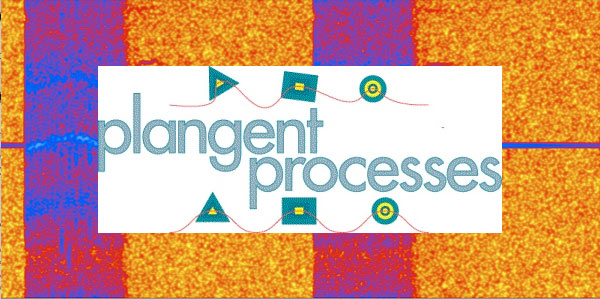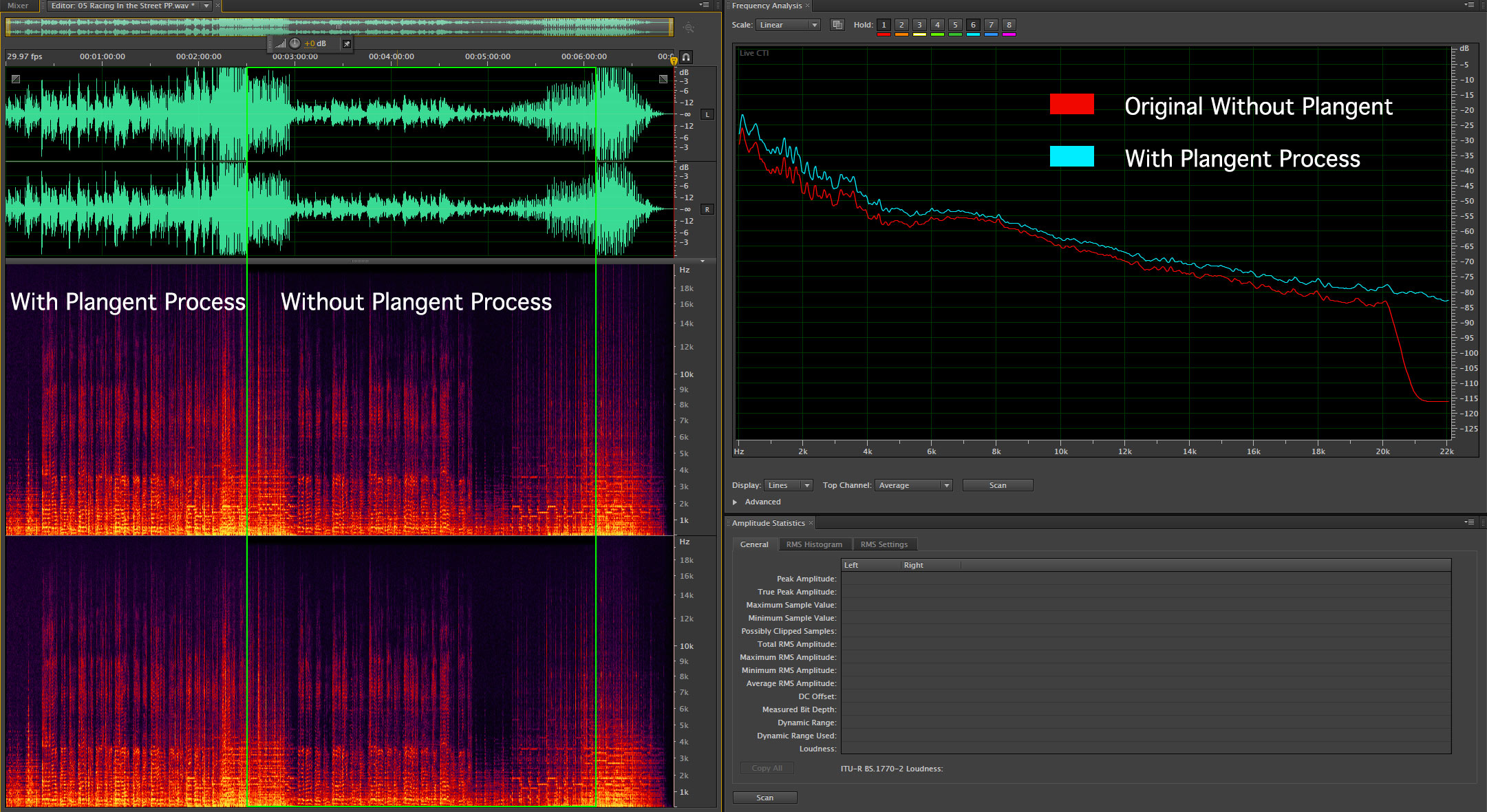Plangent Processed Bruce Springsteen
I had the distinct pleasure of working on project with Bruce Springsteen’s engineer Toby Scott a little over a year ago. Toby (not “Tony” as the USA Today article incorrectly named him) told me about a process developed by Jamie Howarth (USA Today misspelled his name too!) called “The Plangent Processes Playback System”. In the world of transferring analog tapes to high-resolution PCM digital copies, this process has been widely praised.
From the Plangent Processes website:
“The Plangent Processes software, developed with researchers at Cambridge University in England, is proprietary UNIX-based, and is non-realtime. It runs at 768 kHz with 32-bit double precision internally, ensuring scrupulous audio fidelity with little or no artifacts. The basic function of the software is to identify a steady-state ultrasonic reference tone (such as tape bias or logic control) embedded within the original analog signal and then perform continuous high-resolution pitch correction in order to keep the reference tone at a fixed frequency. For transfer, we maintain a fleet of analog ATR102 tape machines rebuilt by ATR Services, along with custom headstacks and preamps, as well as ancillary electronics and most popular A/D converters. Conversion resolution is minimum 96 kHz / 24-bit, though 192/24 is preferred. A 44.1 kHz version of the process is also available with slightly diminished performance.”
In simple terms, what Jamie and the brainiacs at Cambridge University have done is remove or reduce the macro and micro speed fluctuations that invariably occur during analog tape recording and playback. Everything from “wow & flutter” to “scrap flutter” is diminished resulting in “near perfect” playback. This is the ideal way to do a tape transfer. The use of ATR 102 tape machines and custom electronics doesn’t hurt but the essence is in the proper alignment of timing…something that a very well clocked PCM digital system has going for it as well.
But what else are they doing? The spectrogram below shows areas of a song before the Plangent Process was done and the original. The Red plot line is 5 dB lower in amplitude than the processed version. As we’ve come to expect, the best way to make something “sound better” is to turn it up. Louder is always better, right? It becomes really apparent when you look at the amplitude vs. time plot on the left hand side of the illustration. The area inside of the GREEN line is the original. The beginning and the end are the PP [Plangent Processes] sections. The amplitude has been juiced and the result is a narrowing of the dynamic range of the tune.
Figure 1 – A spectrograph of a commercial tune with and without the Plangent Process applied. Note the amplitude difference [Click to enlarge].
I’m a fan of the process. If the budgets were available to hire them to do analog to tape transfers to all of the classic albums that I want to make available, I would seriously consider it. I don’t know what the “price per minute” is but I’ve talked to some mastering engineers and I know it’s not cheap.
USA TODAY did a story the 18th about the “Boss” making available 10 albums on iTunes that were newly mastered using the Plangent Processes technique. Here’s a link to the article if you’re interested. But don’t you have to ask why they would bother to go to all of that trouble for a “reduced resolution” file made available through the Apple download site. Doesn’t the audiophile world deserve these new masters even more than iPod users?
I wrote to Toby and asked about the possibility of getting the transferred files for iTrax. We’ll see. I know it will come through the record label…but I would like to know the exact steps that were taken. I would want to compare the raw transfers with the newly remastered ones done by Bob Ludwig at Gateway Mastering.
Let me choose which one is better…or better yet…how about you choose.



Hello Mark,
First, let me say what an awesome job you are doing. For somebody relatively new to HiFi, I’m thankful there is somebody like you who is passionate about educating. I would also say thank you for watching our backs and sharing your insights. You are the “Ralph Nader” of HiFi
Thanks Clay…I really do appreciate the comments. I’m doing my best and happy to share my knowledge and experience.
Thanks for the kind words.a few updates: the software actually over samples to 24.576 MHz 32bit internally,
And we operate at unity gain, we don’t add level or make it louder. The peak to average ratio in the HF is higher since the signal is less smeared in the time domain. But not 5db- maybe you could point us to the example you cite.
We are thrilled to have been involved and gratified that the results are meeting with positive reviews. We believe that the technology is universally applicable and we hope other archivists will step up as Toby did. Now if we can just figure out who “Tony” is.
Jamie…thanks so much for coming by the Real HD-Audio site. I believe many of the site’s visitors checked out the results of your amazing process. The comparison that I did was using two files that Toby sent…and it did seem that there was more than just timing errors corrected. Very interesting process. I know a bunch of mastering folks that have expressed interest in your developments.
This is certainly a step forward. I can only assume that the 5db difference was something applied after resampling. It’s frustrating that we can’t just leave the dynamics alone. If people really like the loud sound, come up with a DSP on the playback side.
I’m not really sure what to make of the 5 dB increase in level. These files weren’t sent to me by the Plangent person…but I do suspect that they were “juiced” somewhat to be impressive. Don’t really know though.